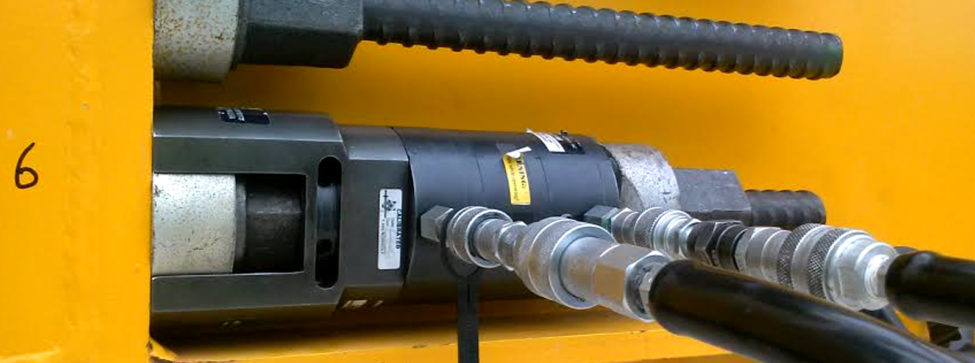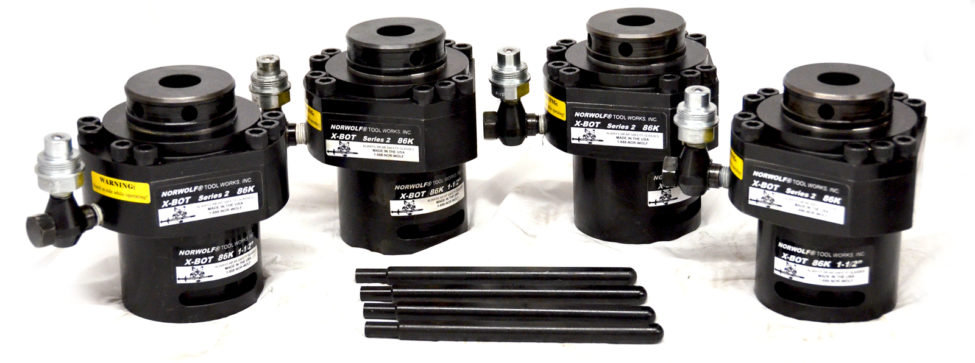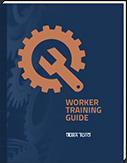How Does a Bolt Tensioner Work?
Tension is the stretch or elongation of a bolt that provides the clamping force of a joint.

How does a bolt tensioner work? It stretches the bolt and when the nut is applied, creates consistent clamping force. The process provides highly accurate and repeatable results.
Creating stretch in the bolt by torquing the nut gives similar results, but is not as accurate, due to the varying rates of friction between the nut threads and the surface under the nut.
Need a little more detail?
Bolts are designed to stretch just a small amount. The stretch clamps the joint together.
A bolt always wants to return to its original un-stretched shape. This inherent bolt spring tension causes clamping force and together with the friction in the bolt’s threads, work to prevent loosening.

In bolt tensioning, the bolt is preloaded, stretching it before the nut is tightened. The tensioner is clamped to the bolt’s threads and pushes against the flange in the surface being bolted. This provides a very consistent amount of stretch to the bolt, ensuring clamping force. Contact our team today for more information.
How does a bolt tensioner work in your application?
Bolt tensioners are unique to application. Selection of your bolt tensioner requires much more data, like:
- Bolt diameter.
- Free stud protrusion length.
- Nut size.
- Washer thickness and diameter.
- Bolt grade.
- Bolt load requirement.
Luckily, bolting tools come in all shapes and sizes.
If you can't recall the data, it's time to get to it.
Find the right bolt tensioner or other bolting tool for your job at one of these links:
- Hydraulic bolting.
- Bolt and stud tensioning.
- Pneumatic bolting.
- Battery powered bolting tools.
- Electric bolting tools.
Or talk to a member of our team about your bolt tensioning application. We know how bolt tensioning works and we can help direct your team to the right product to increase productivity and consistency.



